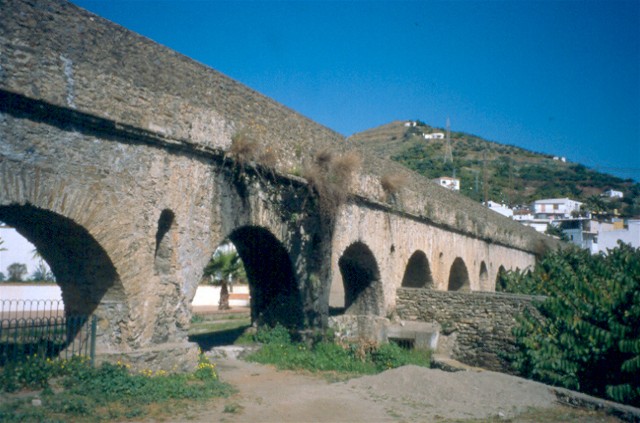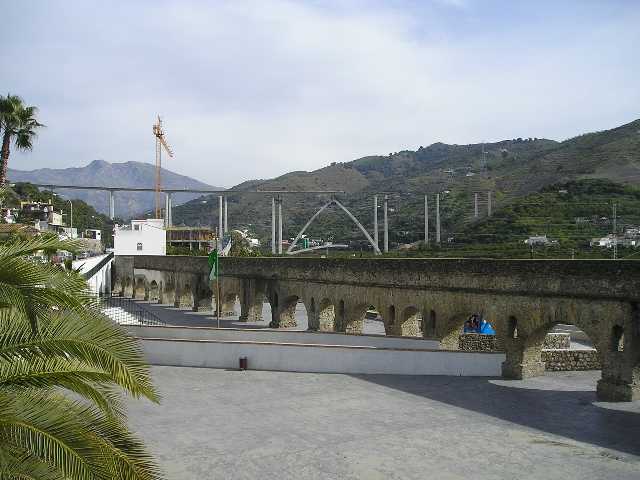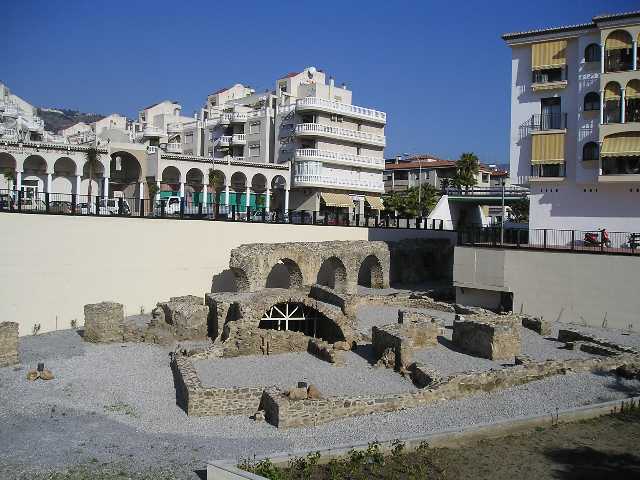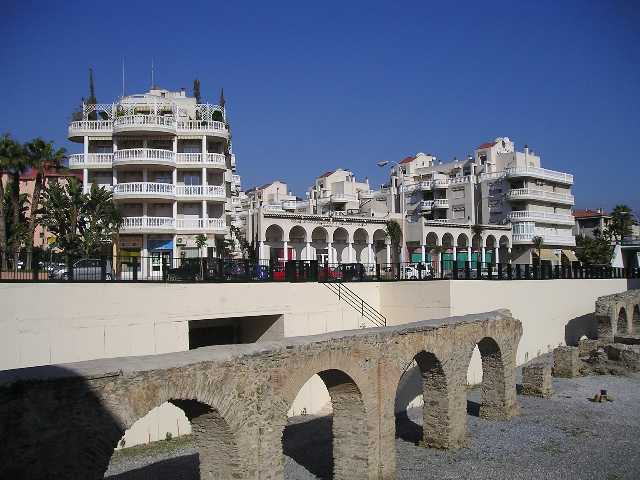HISTORIC ALMUÑECAR
The modern tourist resort of Almuñécar on the Spanish
Costa Tropica about 80 kilometres north of
Malaga has a venerable yet largely unknown history. The Romans came to Southern Spain at the time of
the Second Punic War between Rome and Carthage in 218 BC as part
of the process of subduing the Phoenician settlements along the coast.
The Phoenician Colony in Almuñécar was first established
about 800 BC and had developed for six hundred years into an
important town with the
name of Ex or Sexi and
with an existing fish curing industry that was already a major
supplier of Greece and Rome. During 700 years of Roman Colonial rule
the town and its industry prospered and from 49 BC
the municipality was honoured (one of 20 in Spain) with
the title Firmium Julium Sexi in recognition of the
town's loyalty to Rome. Although the ancient history was known it was
not until the 1950's that significant archaeological evidence was
discovered.
Major evidence of the fish salting and
curing industry was uncovered during excavations in the 1970's and
80's in the extensive Majuelo Botanical Gardens. A small
part of the site has been carefully conserved, giving some idea of the
size of this industry:




The fish curing industry involved the
salting and drying of fish, principally tuna, and also the manufacture
of "garum" a fish paste (perhaps similar to modern anchovy paste) that
was enjoyed throughout the Empire. The industry required not only large
quantities of fish and sea salt, produced in many places along the
coast, but also a constant supply of fresh running water. For
this the Romans built four miles of water conduit in the
valley of the Rio Seco including five significant aqueducts. All,
remarkably, are still standing and four of them are still
in use after 2,000 years - adapted by the Moors over
the centuries to serve the needs of crop irrigation:






Roman Aqueduct
crossing the Rio Verde at Torrecuevas in March 2000 (with a slight
leak).
Six years later,
following repairs, the aquaduct is watertight again, the rough ground
paved, and the river channelled between two walls.
In the distance is the section of motorway viaduct (under construction) that collapsed in late 2005 with fatalities.
In the distance is the section of motorway viaduct (under construction) that collapsed in late 2005 with fatalities.

Three of the aqueducts
are in the Rio Seco Valley. They are un-named and difficult to
reach.
This is number 3, the nearest to the town, and I reached it six years ago after walking along the dry river bed for over a mile.
My companion striding out ahead was a Dutchman.
This is number 3, the nearest to the town, and I reached it six years ago after walking along the dry river bed for over a mile.
My companion striding out ahead was a Dutchman.
The fifth, in the
centre of Almuñécar, was discovered during the recent
excavations of the Roman Baths.
The supply continued
from this point through the old town (where it was still in use in the
16th century) to the fish saltings.
Visit Llandudno - Queen of Welsh Resorts
Photographs © 2006 by Noel Walley
Email: Webmaster
Visit Llandudno - Queen of Welsh Resorts
Photographs © 2006 by Noel Walley
Email: Webmaster